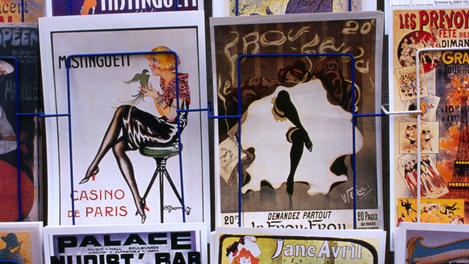dropping a line: the history of postcards

1861 – The postcard is born
Postcards have existed in one form or another since the 1840s, but it wasn’t until H L Lipman bought the patent in 1861 that they became commercially available. Lipman’s Postal Cards were plain, with only a decorative border – the address was written on one side of the card, the message on the other.
1894 – Scarborough’s star turn
In Britain, Royal Mail didn’t give publishers permission to sell picture postcards until 1894. The first British seaside town immortalised on a postcard was Scarborough.
1900s – The Edwardian craze takes off
By the Edwardian era, postcards had become a phenomenon – the equivalent of social networking today. They were used for all sorts of communication, not just on holidays, and individual designs had started to become much more elaborate. John Scott of the historical-themed postcard site historystore.co.uk says, ‘The Edwardians of the early 1900s were a generation in love with the novelty. Among the more popular cards were those cut into the shape of an object relevant to the holiday destination which opened to reveal a strip of views of the town. The name and address of the recipient, together with a postage stamp, was attached on a luggage label tied with string to the card. Amazingly, they almost always arrived undamaged in the post. By 1914 the craze was over, never to be repeated.’
1914-18 – Message from the front line
During WWI, soldiers sent their loved ones delicate postcards known as ‘silks’ for their embroidered silk mesh. Matt Brosnan of the Imperial War Museum explains: ‘Silks were keepsakes, as well as communication. The army postal service was surprisingly speedy. Post was vital for soldiers and families’ morale.’
1920s – Sending a laugh
By the 1920s, humour was a key feature of British postcards and one company,Bamforth’s, was at the forefront. Katina Bill of the Kirklees Museums and a Bamforth expert says, ‘James Bamforth was a master at getting the essence of a joke into a simple image. The seaside holiday was taking off as a mass activity and he was well set to exploit this with his bawdy, music hall-type humour.
1950s – Censorship
Donald McGill was king of the saucy postcard synonymous with the British seaside. But McGill’s success attracted the attention of censors, and in 1954 he was prosecuted for obscenity. Sarah Wildeboer of the Donald McGill Museum on the Isle of Wight explains: ‘McGill’s postcards were hugely popular in the mid-20th century, with some designs selling millions. Although his cards were by no means the most risqué being published at the time, his popularity meant that censors perceived him as the main culprit. In reality, McGill was a respectable man who was himself often appalled at the vulgarity of some other companies’ cards.’
1960/70s – The era of the boring postcard
By the 1960s, postcards had grown so popular that they began to be used to celebrate everything and anything – from the building of new motorways to the opening of housing estates and bus stations. Photographer Martin Parr collected hundreds of these postcards, which make up a fascinating record of how Britain was changing in the post-war period, and published them in his Boring Postcards book.
1980s – Bare cheek
The 1980s saw British holidaymakers deserting traditional seaside resorts for the Costa Del Sol and the Balearics. But they took their penchant for cheeky postcards with them. The naughty seaside postcard was as popular as ever, but this time it was given an often rather graphic European twist. Brian Lund of Picture Postcard Monthlyexplains: ‘The British saucy seaside postcard tradition was about being risqué – it was all nudge nudge, wink wink. In the 1980s, European postcard makers picked up on this theme, but abandoned the quaint innuendos and just went all out with brazen nudes. They sold by the bucketload.’
2011 – A royal boost
Digital photography, Flickr and Facebook pose the most serious threats to postcards since their emergence 150 years ago. But there is one thing guaranteed to have postcard-sellers rejoicing – a royal wedding. Alan Foxlee at Kardorama postcard publishers in London says, ‘We saw a big jump in sales in the run-up to William and Kate’s wedding – the success of The King’s Speech has helped too. Royal postcards always sell a certain amount – pictures of the Queen are the most popular, and generally bought by American tourists.’

 Follow
Follow



